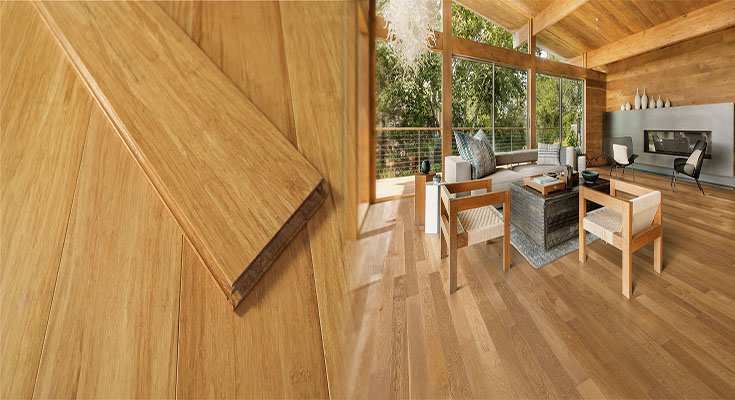Sustainable interior design is an increasingly vital aspect of creating living spaces that are not only beautiful but also responsible and environmentally conscious. If you’re redesigning your home or looking to upgrade your flooring, consider choosing eco-friendly engineered bamboo flooring. In this article, we’ll explore the benefits and advantages of using bamboo as a material for flooring and how it can contribute to sustainable interior design.
Sustainability and Environmental Benefits
Bamboo is an excellent choice for sustainable flooring due to its rapid growth rate and renewable nature. Bamboo grows much faster than traditional hardwood trees, making it a more sustainable and eco-friendly choice for flooring. Additionally, the versatility of bamboo allows for the creation of various products, ensuring that the entire bamboo plant is used, reducing waste and contributing to a circular economy.
Using bamboo for flooring also reduces the need for harvesting traditional hardwood trees, helping to preserve forests and promote biodiversity. Bamboo is also naturally durable, meaning it can withstand wear and tear and last for years, reducing the need for frequent replacements or repairs.
Engineered Bamboo – Enhanced Durability and Stability
While solid bamboo flooring is a popular option, engineered bamboo flooring offers enhanced durability and stability. Engineered bamboo consists of a top layer of bamboo and several lower layers of plywood or other materials, strategically arranged to provide stability and strength. These layers work together to resist shrinking or expanding due to changes in humidity or temperature, ensuring that the flooring retains its shape and aesthetics over time.
Moreover, the multi-layered construction of engineered bamboo flooring increases sound insulation and heat dispersal, contributing to a more comfortable living environment.
Aesthetic Appeal
Bamboo flooring offers a unique aesthetic appeal that adds warmth and texture to any interior space. Natural bamboo has subtle color variations, providing a natural and organic look. Engineered bamboo flooring, on the other hand, offers a wide range of colors, grains, and finishes, making it possible to create different looks that complement various styles of interior design.
Whether you prefer a minimalist or a more rustic look, there will be a bamboo flooring type that can provide the desired look and feel. The variety of options makes bamboo flooring a versatile and functional solution for any interior design scheme.
Low Maintenance
Another advantage of using engineered bamboo flooring is its low maintenance requirements. Unlike traditional hardwoods that may require refinishing or other special treatments, bamboo flooring only needs minimal upkeep. Regular sweeping or vacuuming will keep the floors clean, and the occasional mop with a damp cloth or cleaning solution is enough for deeper cleaning.
Bamboo flooring offers numerous benefits for sustainable interior design, including its renewable nature, durability, stability, aesthetic appeal, and low maintenance requirements. Engineered bamboo flooring, in particular, offers enhanced stability and strength and a plethora of design options, making it a popular choice among homeowners and interior designers alike.
By choosing eco-friendly engineered bamboo flooring, you’re not only enhancing the aesthetics of your space but also contributing to reducing your ecological footprint and promoting sustainable living. So, consider adding this environmentally responsible and aesthetically appealing flooring to your renovation or design plans.










